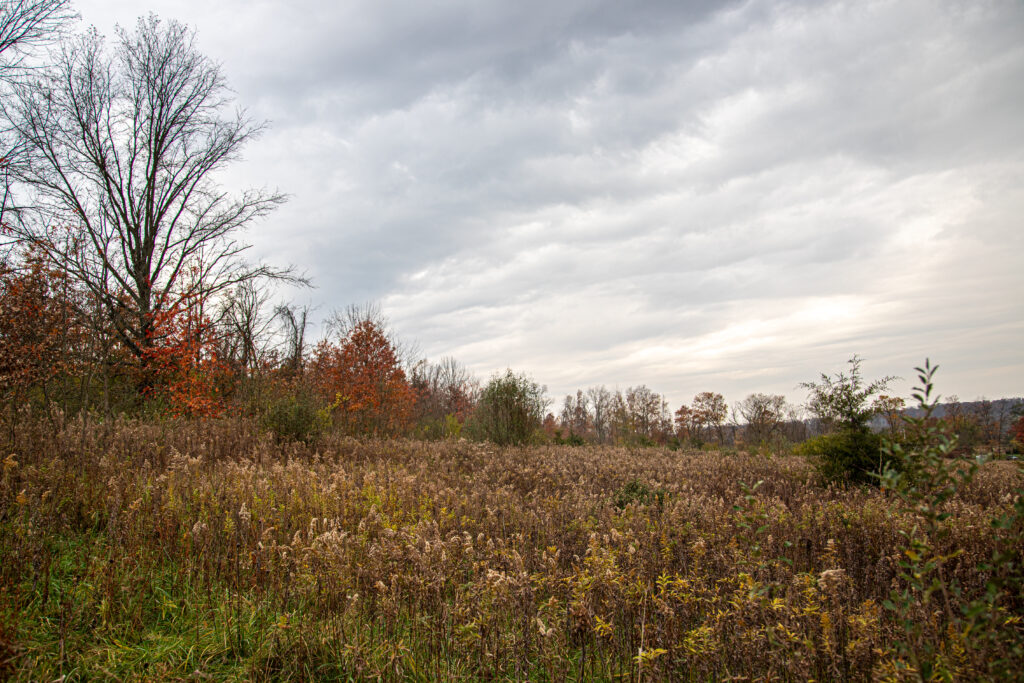The Conservancy is actively restoring habitat at Donegal Highlands Nature Preserve.
Because of years of human impact, our small islands of remaining forest, wetland, and meadow require intensive ongoing stewardship. If left alone, they become unhealthy and infested with invasive species. Human impact at and around Donegal Highland has resulted in an even-aged forest stand that has little forest layer stratification (in other words, way too many of the same species of tree that are the exact same size). Patches of the woods and the edges of the meadow are also dominated by invasive shrubs that are smothering native plants and young tree growth. Ecosystem services provided by nature like the filtration of clean water, clean air, decomposition, carbon sequestration, nutrient cycling, and food crop pollination suffer as a result.
It’s going to take a lot of work to restore this 112-acre nature preserve.
Over the end of 2023 into 2024, what you’ll see at Donegal Highlands is intentional disturbance meant to mimic natural processes now gone from our landscape, such as wildfires or roaming herds of bison. (Yes, even in Pennsylvania!) Natural and, in this case, aided disturbance allows for greater ecosystem diversity, which supports more native plants and wildlife.
Careful study and consultation with other land trusts by the Conservancy’s professional Stewardship staff led to the creation of a restoration plan for Donegal Highlands. That plan includes the use of climate smart forestry to encourage more layers of successional forest with the growth of new hickory and oak and the removal of invasive species like bush honeysuckle, autumn olive, and privet with a forestry mower.

Photo by Hylon Plumb
Sometimes restoration can look messy, but the result is a healthier ecosystem. In the case of Donegal Highlands, the Conservancy has also thoughtfully planned to mitigate and then repurpose the impact of its restoration efforts into opportunities to open the preserve to the public, giving visitors to the neighboring Old Trolley Line Park more options for outdoor recreation.
Humans have played a significant role in the degradation of this ecosystem. The Lancaster Conservancy is playing a critical role in its restoration. Centuries of neglect can’t be reversed in one action. This is generational work, and you are witnessing the beginning of the legacy we will leave behind. You can be part of this legacy by contributing time and resources as a volunteer or member of the Conservancy.
